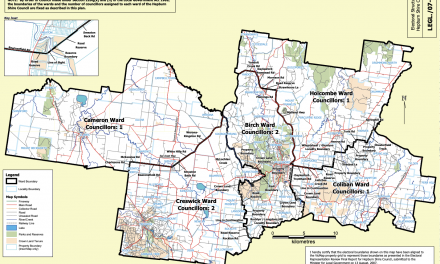Hepburn Shire Council has formally applied to the Essential Services Commission (ESC) for a rate cap increase of 10% for the 2025/26 financial year. This includes an additional 7% on top of the 3% cap already set by the Victorian Government, as the council attempts to secure its long-term financial sustainability.
The proposed increase, if approved, would generate an additional $1.36 million in revenue, equating to an average rise of $2.20 per property per week. According to Mayor Don Henderson, the increase is necessary to ensure the council can continue to provide essential services and infrastructure for the community.
A rate increase would affect ratepayers in the Daylesford/ Hepburn area disproportionately because of much higher capital improved values as assessed by the Valuer General.
Hepburn Shire, which has historically operated on a low rate base, is currently facing a projected cash shortfall of $4 million per year. General rates and charges contribute approximately 66% of the council’s total revenue, but with a smaller population than many other municipalities, balancing the budget has become increasingly difficult.
The Shire ranks 60th out of 79 Victorian councils in terms of average rates per property assessment. Average rates of $1,671 per property are well below Councils such as Hobsons bay and Maribynong City which exceed $2,000 per property. Among small rural shires, Hepburn ranks 12th out of 19. Loddon Shire is the lowest in the state with average rates of $1,300 per property.
The historical low rates applied by the Shire have been locked in by rate capping introduced by the state government in 2016. Although the shire has applied the maximum increase allowed by the Minister every years since then, increases in rates revenue have not generated the income necessary to deliver services expected by the community while maintaining and renewing community assets.
In the 2024/25 financial year, the Council implemented $1.5 million in permanent operational efficiencies. However, even with these cost-cutting measures and the proposed rate cap increase, an additional $2.6 million in savings will still need to be identified for 2025/26. The council has acknowledged that this will likely mean reductions in services, though the specifics are yet to be determined.
In a Financial Vision survey of residents in May 2024, 38% of respondents were opposed to any increase in rates and about 50% would support an increase of up to 10%. Of the 315 people who responded to the survey, most were female ratepayers between the ages of 40 and 79 who resided in the former the Birch ward.
Even if the 10% rate increase is approved, the Council’s financial position will remain constrained. The additional revenue would allow for only the renewal of existing capital works, with no surplus funds available for new projects unless fully funded by external grants. Moreover, the council would have limited or no capacity to co-contribute to state or federal grant programs, nor would it have reserves for unexpected emergencies.
If the rate cap application is unsuccessful, the council will have to find savings of up to $4 million per year through service reductions. Even if it is approved, Council will still need to cut $2.6 million from the budget.
The question remains whether a drastically scaled-down council would still be viable in the long term and able to meet the needs and expectations of the community. Some have suggested that the state government needs to address the broader structural issue of the third tier of government and review municipal boundaries to create more efficient and sustainable local government entities.
The council is currently developing its draft Council Plan 2025–29 and the 2025/26 Budget, both of which will outline service changes and financial strategies. These documents will be released for public feedback in May. The ESC is expected to make a decision on the rate cap application by the end of April.
The full higher rate cap application can be viewed on the Essential Services website. Residents who wish to provide feedback on the proposed higher cap can submit their comments to the ESC at localgovernment@esc.vic.gov.au by April 10. Additionally, the upcoming Hepburn Shire Council meeting on March 25 will provide an opportunity for community members to ask questions or address council representatives, with written submissions due by 10 a.m. on March 24.
Cr Henderson emphasised that while the rate increase proposal was not made lightly, it is necessary to maintain the council’s financial stability. “We understand the cost-of-living pressures on our residents, and we are continuously working to find efficiencies that reduce the financial burden while ensuring we can continue delivering essential services.”
Hepburn Shire residents face an uncertain financial future, with the potential for either higher rates or significant cuts to services, depending on the outcome of the council’s request.
This article is based on a media release from Hepburn Shire Council.





